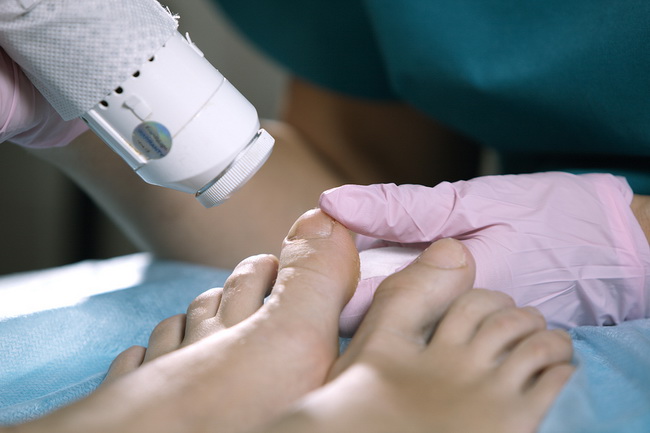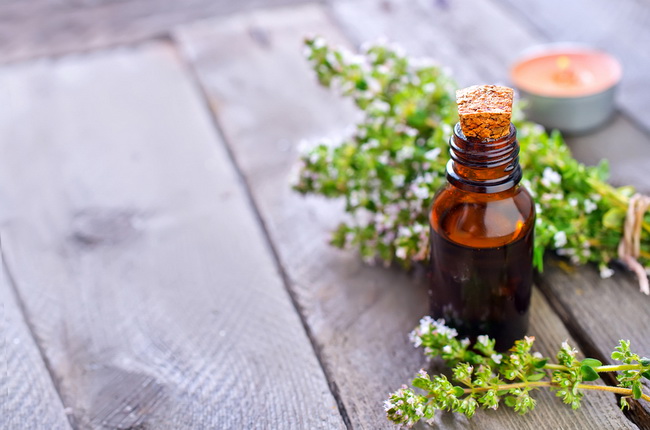- Make It Yourself Lavender Heart-Shaped Bath Bombs!
- 20 Things You Never Knew About “Down There”
- 12 Best Foods For Those Suffering From Arthritis Pain
- 12 Personal Hygiene Mistakes Almost Everyone Makes (Mom Never Told You About #4!)
- 15 Medicinal Plants And Herbs From The Cherokee People
- 12 Mind-Blowing Benefits Of Drinking Coconut Water During Pregnancy
- 12 Outstanding Winter Foods That Won’t Fatten You Up Like A Christmas Turkey
5 of the Best Ways to Get Rid of an Ingrown Toenail

Photo credit: bigstock.com
If you have ever had an ingrown toenail, you know how painful something so small can be. Although this is a very common problem, medically called onychocryptosis, this little problem can spiral into an infection so large it requires surgery to repair it. An ingrown toenail will not go away on its own; you need to take steps to take care of the problem.
There are several reasons why ingrown toenails happen:
- Poor fitting shoes and high heels
- Diabetes – If you have diabetes, you should see a doctor regarding your ingrown toenails as these can lead to serious complications.
- Improper cutting of the toenail
- Injury to the toe or toenail
- A natural condition where nails tend to grow in a curved or downward position
- Infections
- Toenail fungus
Keep reading for the top 5 ways that you can fix that ingrown toenail problem and start feeling better right away.
1. Soak
Foot baths are a very important part of the overall treatment. Soaking your feet will soften the nail as well as the surrounding skin that will make all other remedies you try more efficient. Be certain to soak your feet regularly. Soak your feet twice each day for a minimum of 20 minutes at a time. Use hot or very warm water. Add any of the following healing compounds to help increase your success:
- Apple Cider Vinegar – Add two or three tablespoons of apple cider vinegar to your water. This will help stop any infection that might have started.
- Epsom Salt – Epsom salt softens the skin and will make it easier for the nail to grow out. Add one heaping tablespoon of salt to your water.
- Hydrogen Peroxide – Mix a half a cup of hydrogen peroxide in your water and soak for a minimum of 20 minutes. Hydrogen peroxide will soften the skin as well as prevent infection.
2. Cotton Ball Method
After you have soaked your feet, you can encourage the nail to grow in a different direction by taking a very small piece of cotton and rolling it up between your fingers. Take this small roll and carefully place it between your skin and the affected part of the toenail. This might be a bit painful as you do it, but once in place you won’t notice it. This will help the nail grow up and out of the skin, instead of digging it further down into the skin. Leave the cotton in until your next foot soak. Change the cotton after every soak. Continue until the nail has fully grown out.
Continue to Page 2

Photo credit: bigstock.com
3. White Flower Oil
Although this traditional Chinese medicinal oil does not actually come from any white flower, this combination of herbal oils, such as lavender and eucalyptus oil, makes for a very powerful healing mix. Apply a few drops of white flower oil on your ingrown toenail several times per day to encourage the nail to grow out.
SEE ALSO: 12 of the Best Anti-fungal Herbs on the Planet
4. Topical Treatments
There are other healing compounds you can put on your toenail to help prevent infection and encourage healing including:
- Lavender essential oil
- Tea tree oil
- Oregano oil – This will need to be mixed with a good carrier oil, such as olive oil, before applying
- Thyme oil
Continue to Page 3

Photo credit: bigstock.com
5. Other Home Remedies
There are several other home remedies that have been used throughout the ages to help with ingrown toenails and you can give these a try as well.
- Vicks Vaporub – This softens the nail as well as stopping infection with its antibacterial and antiseptic compounds. Liberally apply it directly to your nail and try to rub some under the affected toenail if you can.
- Lemon – Cut a thin slice of lemon and place it over the toenail. Cover it with a bandage or some gauze and cover with a sock to help keep it in place. Leave overnight.
- Antibacterial Liquid Soap – Adding one squirt of liquid antibacterial soap to the water you soak your feet in can also help to stop infection and soften the toenail. When you have finished soaking it, place a few drops directly on the toenail and wrap with a bandage. This will encourage the nail to grow.
If you can, try to go barefoot while your toe is healing to give it plenty of light and air. A good dose of sunshine is always healing. If this isn‘t possible, then at least wear flat, comfortable shoes that give your toes plenty of wiggle room.
If your toenail does not seem to get better, gets worse, or if you see signs of an infection that won’t go away even with home treatment, see a doctor. If you are a diabetic, always see a doctor regarding any problems with your feet or lower legs.
References:
































